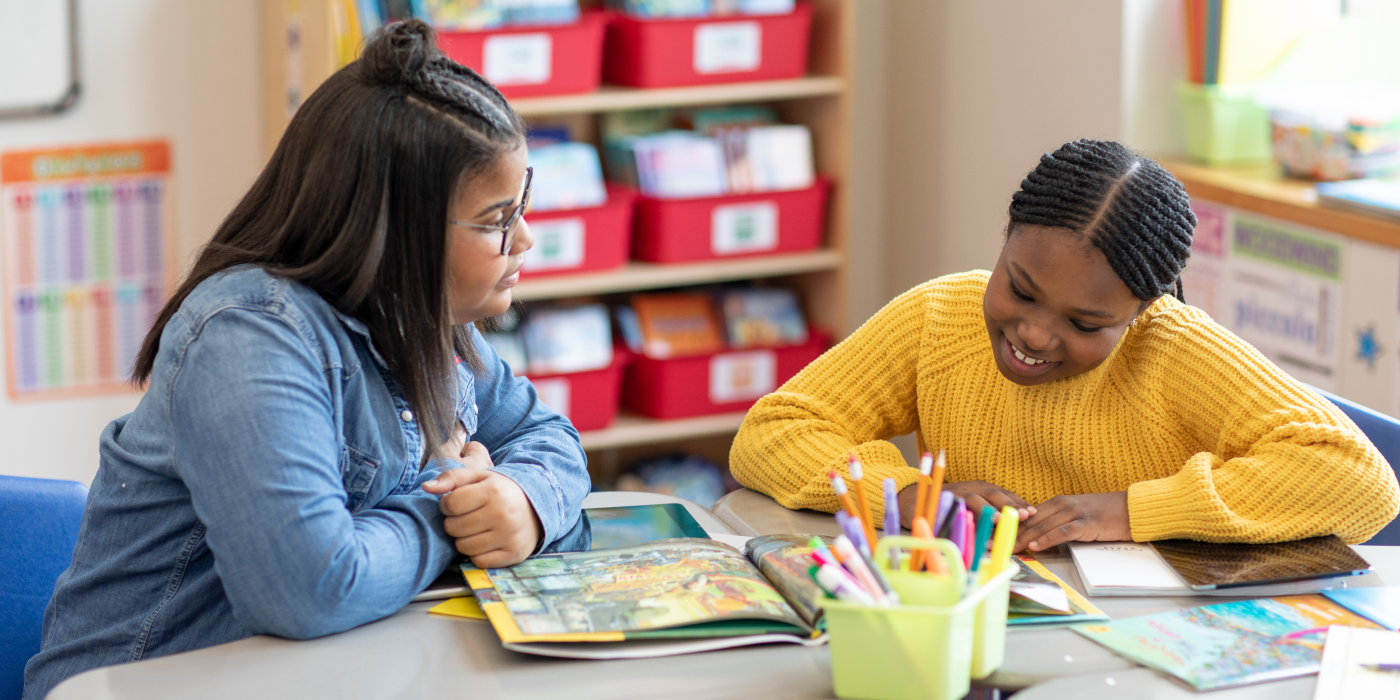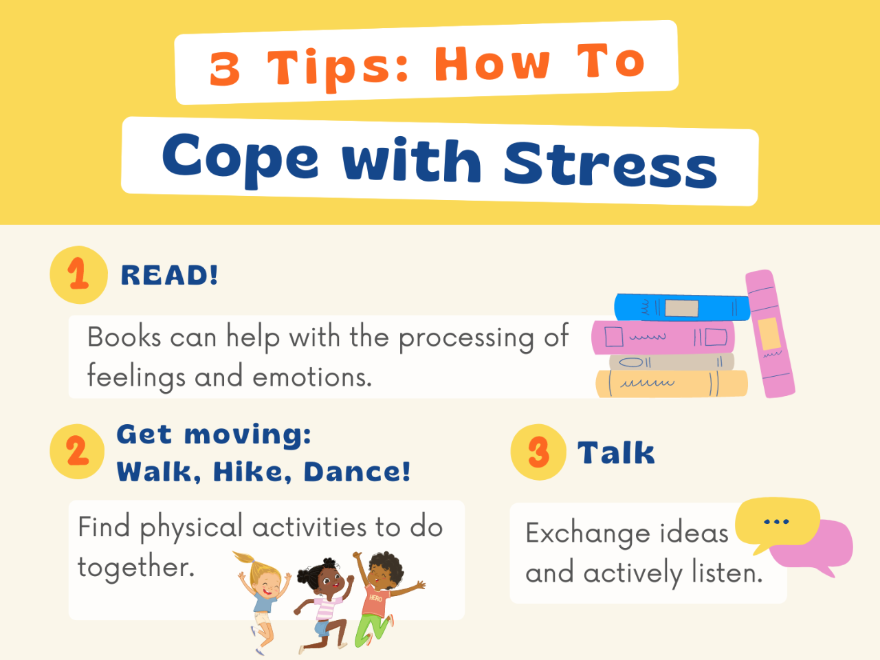More and more children and adolescents have been struggling with mental health issues during the pandemic. How can we help them process their emotions and support their well-being? As we look forward to the back-to-school season, it’s important to be prepared with strategies to support teachers, students, and families. Dr. Amanda Alexander and Dr. Jose Paez recently spoke with Scholastic Reads podcast host Suzanne McCabe about social and emotional learning (SEL) and how it can foster the knowledge and skills kids need to thrive. Amanda is the Chief Academic Officer at Scholastic, and Jose is a clinical fellow in child and adolescent psychiatry at the Yale Child Study Center. They are part of the Yale Child Study Center – Scholastic Collaborative, a partnership that explores how literacy can foster resilience among children and families. Below are highlights from the conversation, which has been edited for length and clarity.
Listen to the full podcast episode here.
Q: What is SEL, and how do you see it benefiting children?
Dr. Amanda Alexander, Chief Academic Officer, Scholastic: SEL is an integral part of education and human development because learning is a social and emotional process. CASEL [the Collaborative for Academic, Social, and Emotional Learning] defines SEL as the process through which all young people and adults acquire and apply the knowledge, skills, and attitudes to develop healthy identities, manage emotions, and achieve personal and collective goals. SEL also teaches us how to feel and show empathy for others, establish and maintain supportive relationships, and make responsible and caring decisions. CASEL’s framework has five competencies: self-awareness, self-management, social awareness, relationship skills, and responsible decision-making.
Isn’t it important for us to all be aware of ourselves, to be able to manage our emotions, to engage with others, and to make sound decisions?
Dr. Jose Paez, Clinical Fellow, Yale Child Study Center: These skills aren’t just necessary for children. These skills are needed across the board, for adults as well. It extends beyond the walls of the school. These are things that are needed in our society as a whole.
Dr. Amanda Alexander: Tending to the mental health needs of kids is done best when it’s integrated into the curriculum in daily activities and not necessarily as a stand-alone. It starts even when students first enter the building. They can be greeted in a special way by adults.
It’s important for adults to convey to kids that they matter: “I see you. I’m glad you came to school today. You’re a valued member of our community.”
Q: Could you describe some of the ways Scholastic and the Yale Child Study Center work together to help further literacy and wellness?
Dr. Amanda Alexander: Both Yale and Scholastic see a clear intersection between literacy and mental well-being. Talking about books is a natural way to engage with your emotions and problem-solve. SEL, ultimately, is about helping children and adults regulate and articulate emotions. Books are the perfect medium to allow for this to happen. Children and adults can talk about and process their feelings through the characters in books without always necessarily making themselves the object of inquiry, which is sometimes a little scary.
Dr. Jose Paez: The concept of literacy can also be translated into emotional literacy, helping kids put words to emotions. Books are a great avenue to do that.
Q: Dr. Paez, what has changed the most in your psychiatric practice in the past decade?
Dr. Jose Paez: I find myself talking about things such as race, gender identity, and sexual orientation a lot more openly and a lot more frequently during my sessions with children and parents alike.
People were living in a very pleasant ignorance up until very recently, with the death of [George] Floyd. That really made people analyze and re-evaluate the state of affairs.
Q: Why are representation and accurate accounts of history so vital for the well-being of all children, especially those who are marginalized?
Dr. Amanda Alexander: America is a democracy, and in a democracy it’s important for citizens to be educated. And we learn by reading books and forming our own opinions about matters and events in the past. That level of interpretation and judgment belongs to the reader as an individual in a democracy. The taking away of books, essentially, stops that process from happening.
We all have different political views, but we can agree that all human beings have the right to be loved and to be treated with respect no matter what their race, creed, or sexual orientation is. They also deserve to see themselves equally represented in books, especially children. And they need their stories to be told to them in books. This is really about inclusivity.
At the youngest of ages, children are capable, and I think it’s important for parents and adults to actually take the lead and help kids understand these difficult processes. The truth of the matter is, with all the social media out there now, kids will find out things on their own and learn and form their own opinions. Sometimes, they are ill-informed opinions, so I think it’s incumbent upon adults to take the lead here and help children learn the truth—in ways that, of course, are developmentally appropriate. Young children should not be exposed to violence or themes that aren’t developmentally appropriate, that they would have trouble processing.
Dr. Jose Paez: The more open we are about certain topics, the more palatable they become to our ears. Like adults, children have internal lives. If they don’t have the right words or the literacy to talk about what that looks like, what their internal life looks like, with adults, that can morph and be influenced by a million things—social media, peer groups, and things like that. It’s only to the benefit of society as a whole, I think, to have the right words to use to identify emotions and to be able to talk about that internal life and how that’s affecting you and affecting your surroundings.
Q: Are there effective strategies you can cite to help children—and families—cope with the stress and trauma of the past few years?
Dr. Amanda Alexander: Across racial lines, across socioeconomic status, folks were dealing with a lot during the pandemic and realized that we needed to tend to our mental health and well-being. I think the acknowledgement has led to meaningful conversations among educators and parents about the needs of our children.
It’s definitely a challenge to cope with all of the stress and trauma that folks have experienced these past two years, but the teacher in me and the Scholastic employee in me says, first, “Read! Read a book.” We talked about books and how they help with the processing of feelings and emotions. Read together. I also think it makes sense to find physical activities to do together. Exercise relieves stress. Go for a walk. Go for a hike in the park. Kick a soccer ball. Throw a frisbee. Dance. Get moving. And I think the last thing is just talk, talk, talk. Talk to your kids. Talk with other adults. Exchange ideas and tips and best practices, but I think talking matters too.
I love the idea of folks reading the same books and talking about them across home and school.

